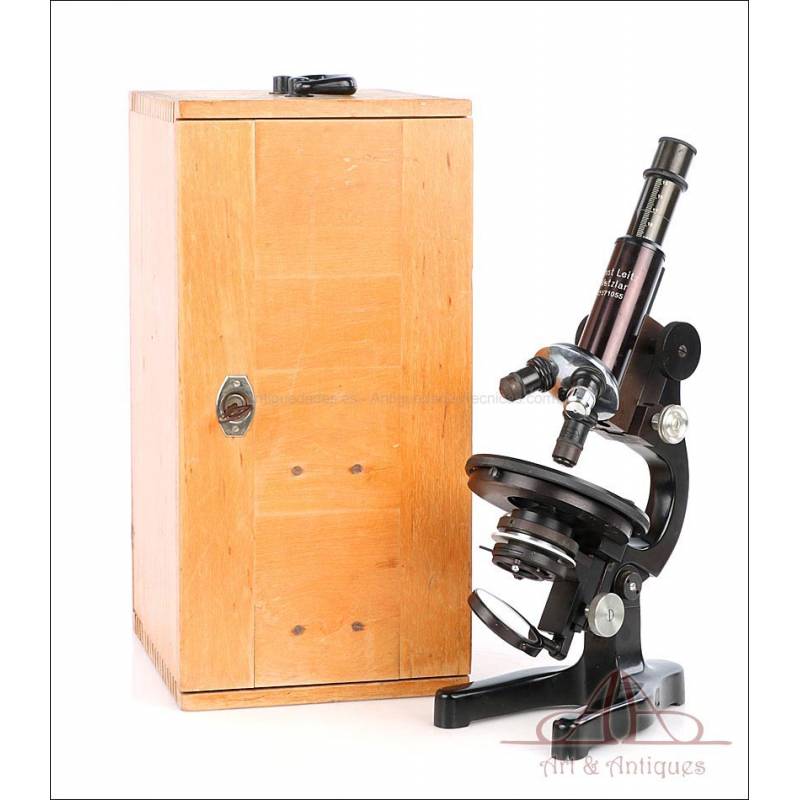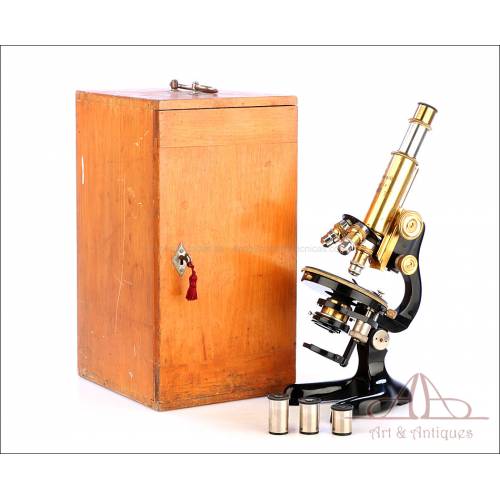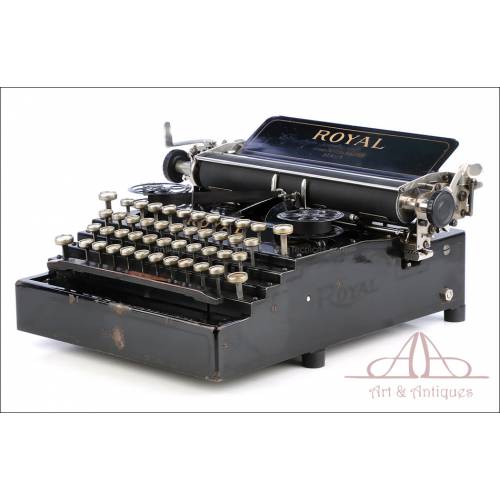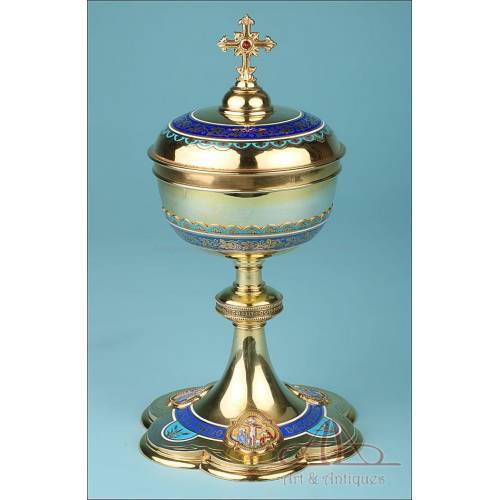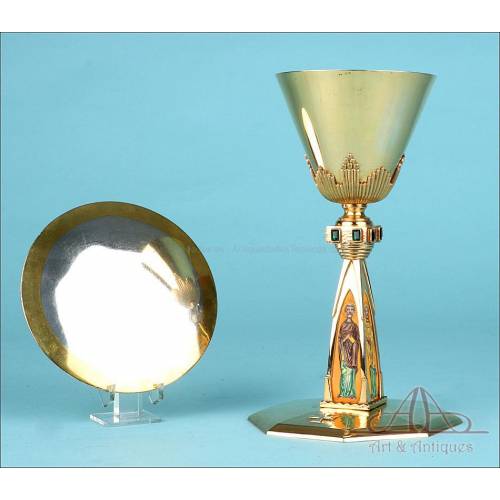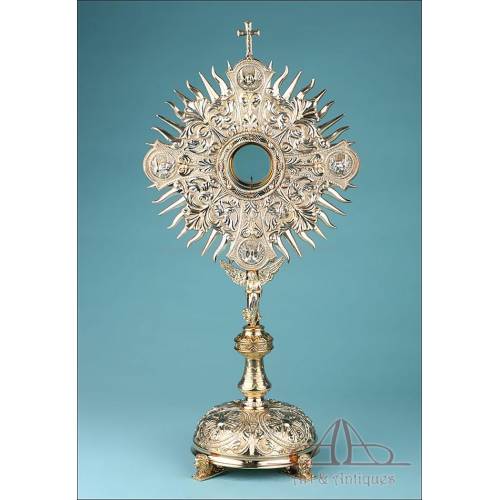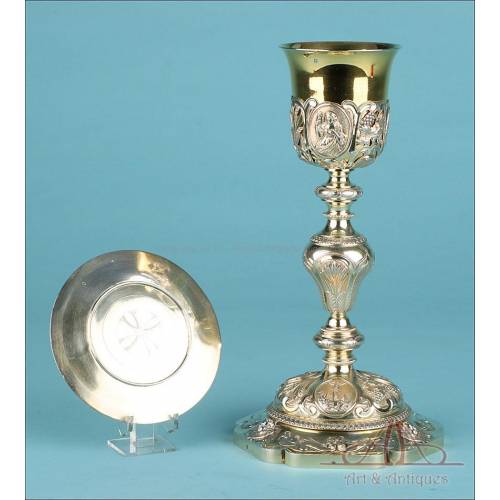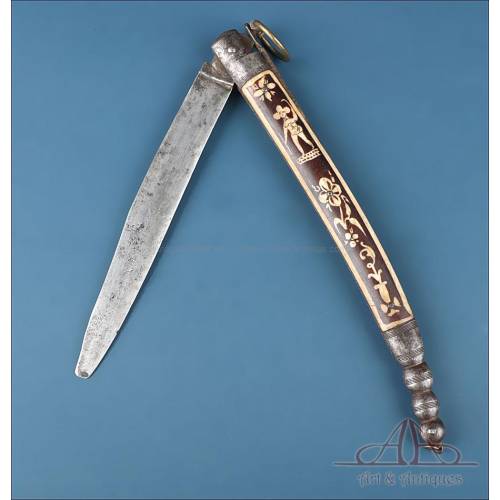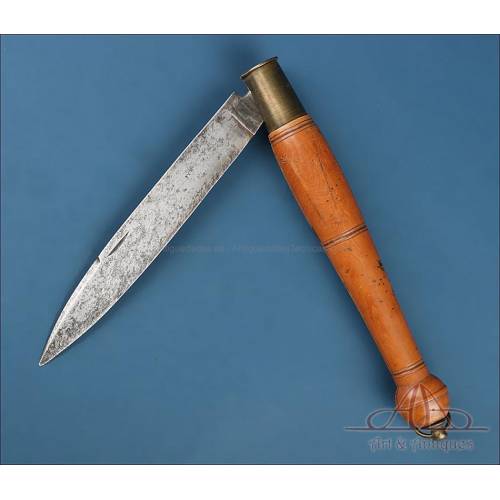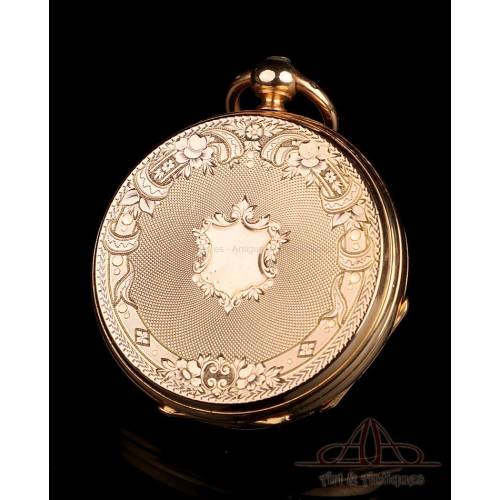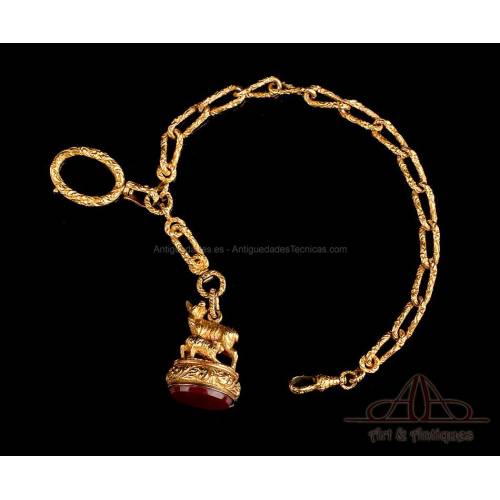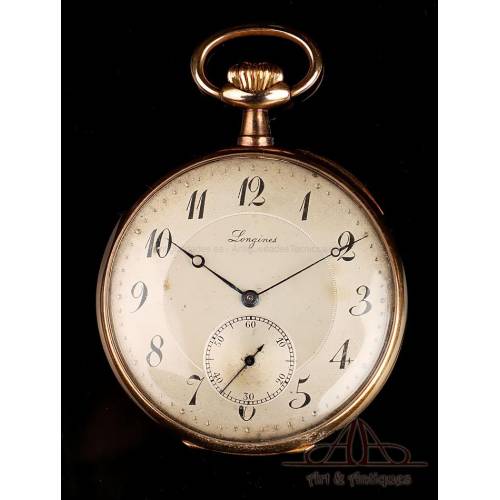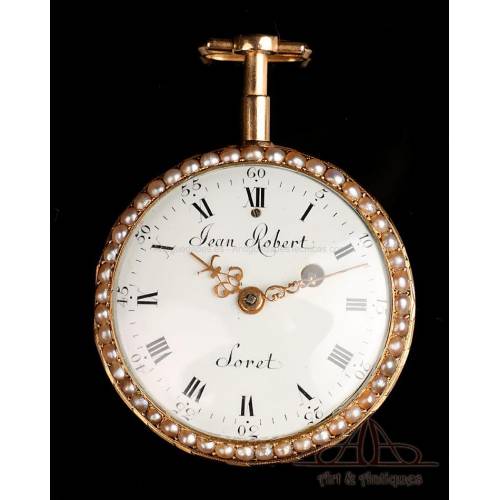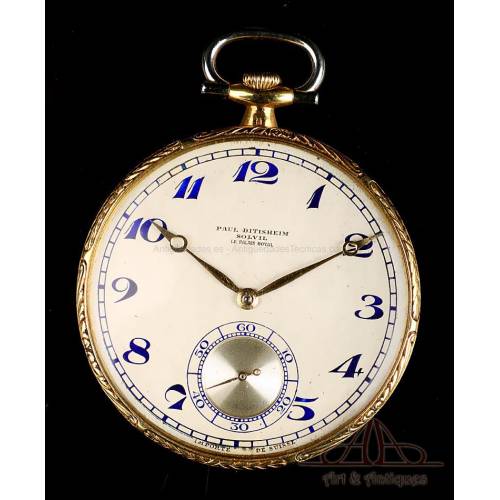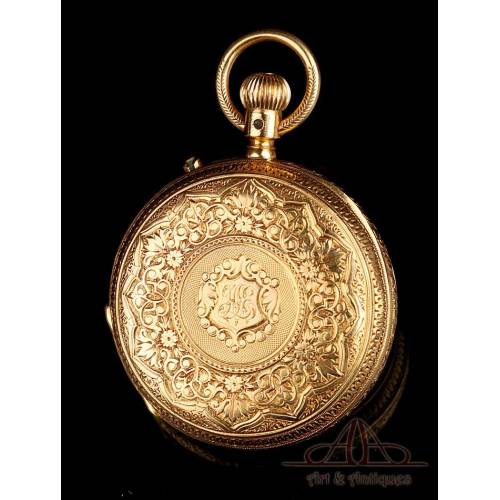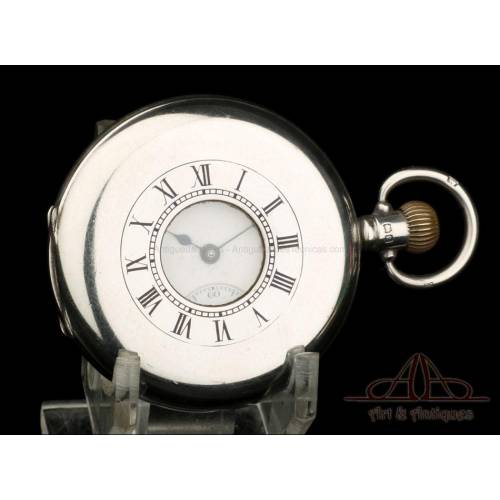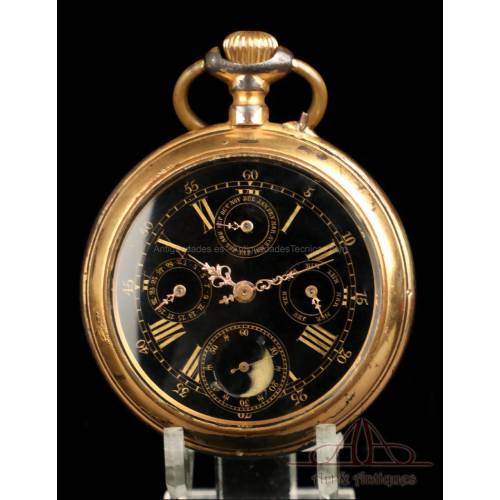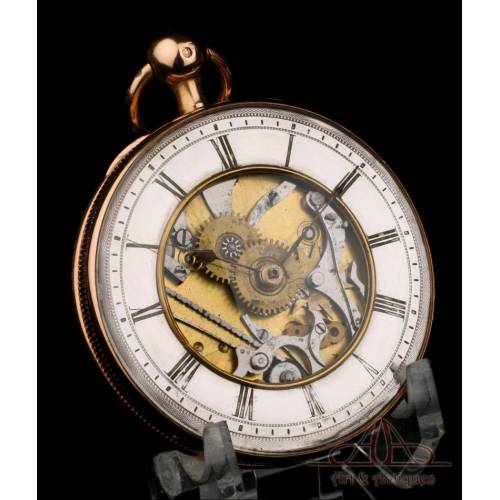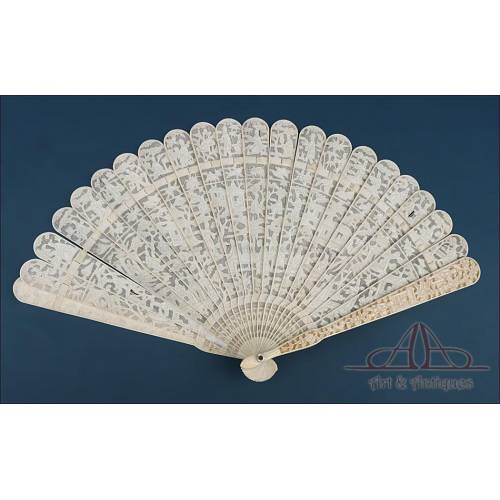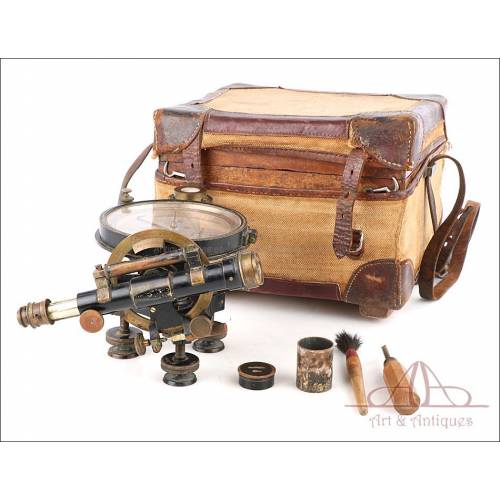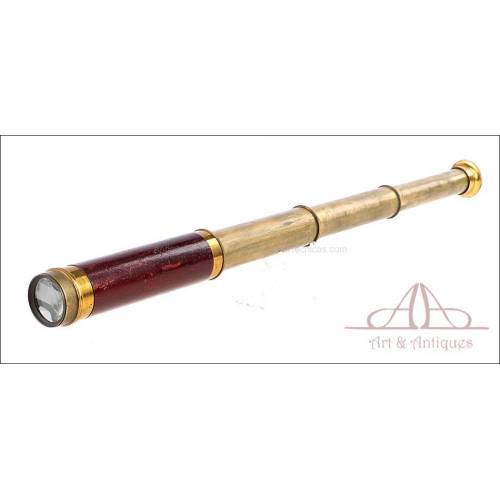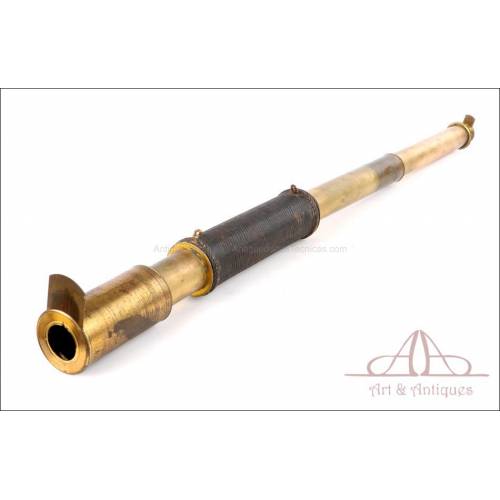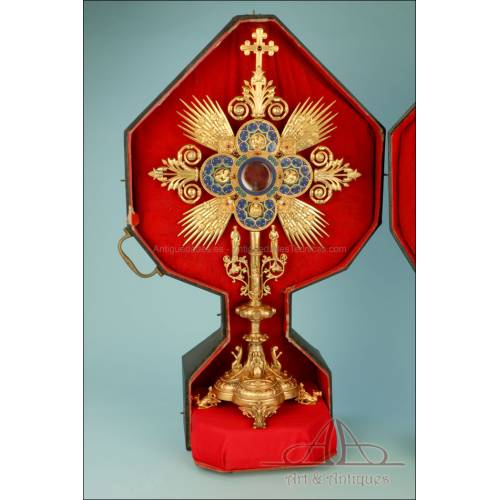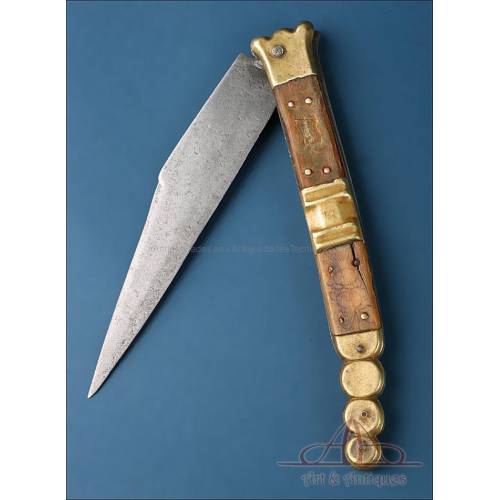D-925
Antique Leitz Microscope Made during World War II. Germany, 1944
Striking black-lacquered German Leitz Wetzlar microscope. Made during World War II. In fine condition and with storing case.
Sold!
Antique Leitz microscope made during World War II, coming from Germany and dated in 1944. It is in excellent condition and comes with its original light-colored mahogany wooden case. The serial number 371005, engraved in the microscopes turret and painted white, is coincident with the one marked in the case and written in the card with the instruments data. This device is completely lacquered in black, the finish remaining in great condition. The same can be said about the inscriptions (the scale, the manufacturers name with the serial number and the brand logo). It mounts a three-lens revolving nosepiece and comes with three extra lenses (numbered 3, 6 L and oil immersion) and a x10 tb eyepiece made by Leitz Wetzlar. The rack-and-pinion which makes it possible to move the turret and focus the samples is in great condition and works fluidly. The double-sided mirror, the shutter and the adjusting knobs are also finely preserved, turning the use of this microscope into a real pleasure for its owner. This wonderful antique Leitz microscope, made during World War II, will stand out for its rare black-lacquered finish and its great working order. Dimensions: Width: 4.71 in / 12 cm. Height: 14.17 in / 36 cm. Depth: 7.09 in / 18 cm. Ernst Leitz Wetzlar History The beginnings of the famous optic material manufacturing company named Ernst Leitz Wetzlar can be found in the first half of the 19th century, when the mechanic and selft-taught mathematician Carl Kellner founded the Carl Kellner Optisches Institut in Wetlzar, Germany. After his early death his widow maintained the business, and in 1864 the mechanical engineer Ernst Leitz entered the company. Just five years later, Leitz took control of the firm and changed its name for Ernst Leitz Wetzlar. Leitz led the company to success after introducing improvements such as serial production, raising sales volume rapidly after 1871. Leitz microscopes included technical improvements that increased their quality; by the late 19th century the company already had a worldwide reputation. Ernst Leitz died in 1920 and the leadership of the firm passed to his son. As well as for their microscopes and optic material, Leitz became hugely famous for their famous Leica cameras (abbreviation of Leitz Camera).

